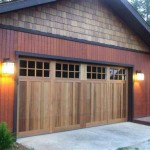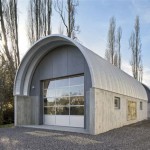Making The Most Of Your Appliance Garage Kitchen Cabinet
The appliance garage kitchen cabinet, often overlooked in kitchen design, presents a versatile solution for maximizing space, enhancing functionality, and contributing to a streamlined aesthetic. This specialized cabinet is designed to conceal small appliances, keeping countertops clutter-free and contributing to a more organized and visually appealing kitchen environment. Effective utilization of an appliance garage requires careful planning, strategic organization, and consideration of its unique design features.
This article aims to explore the benefits and various strategies for optimizing the use of appliance garage kitchen cabinets. It will delve into the selection process, organization techniques, power supply considerations, and the potential for personalization to enhance both the practical and aesthetic value of this often-underestimated kitchen feature.
Strategic Appliance Selection and Placement
The first step in maximizing the potential of an appliance garage is careful consideration of which appliances to house within it. Not all appliances are equally suited for this type of storage. The ideal candidates are those that are used frequently but are not necessarily needed on permanent display. These typically include items such as toasters, blenders, coffee makers, stand mixers, and food processors. The choice should be based on the user’s cooking habits and the available space within the appliance garage.
Size and dimensions are critical factors to consider. Prior to purchasing or constructing an appliance garage, it is essential to measure the dimensions of the appliances that will be stored inside. Allow for adequate clearance around each appliance to ensure easy retrieval and prevent overcrowding. Overcrowding can lead to difficulties in accessing appliances and potentially damage them due to restricted airflow or accidental impacts. Consider the height, width, and depth of each appliance, as well as the swing radius of doors or lids when in operation.
Placement within the appliance garage should also be strategic. Frequently used appliances should be placed at the front for easy access, while less frequently used items can be stored towards the back. Using tiered shelving or pull-out trays can further enhance accessibility and organization. It’s also important to consider the weight of the appliances. Heavier items should be placed on lower shelves to prevent instability and reduce the risk of accidents when retrieving them.
Furthermore, consider the heat generated by certain appliances, such as toasters and coffee makers. Ensure there is adequate ventilation within the appliance garage to prevent the buildup of heat, which could potentially damage the cabinet or the appliances themselves. Some appliance garages are designed with ventilation holes or slots to facilitate airflow. If the chosen appliance garage does not have built-in ventilation, it may be necessary to add it or to avoid storing heat-generating appliances within it.
Optimizing Internal Organization and Accessibility
Beyond strategic appliance selection, the internal organization of the appliance garage plays a critical role in its overall functionality. A well-organized appliance garage not only maximizes space but also makes it easier to find and retrieve the desired appliance quickly and efficiently.
One effective organizational technique is the use of vertical dividers or shelves. These can be used to separate different appliances and prevent them from shifting or colliding with each other. Adjustable shelves are particularly useful, as they allow for customization based on the height of the appliances being stored. Dividers can also be used to store accessories, such as blender attachments or coffee filters, keeping them neatly organized and easily accessible.
Pull-out trays or shelves are another valuable addition to an appliance garage. These allow for easy access to items stored at the back of the cabinet without having to reach over or move other appliances. Pull-out trays are particularly useful for storing heavier appliances, as they reduce the strain on the user when retrieving them. The tray should be sturdy enough to support the weight of the appliances and should glide smoothly for ease of use.
Wire baskets or bins can be used to store smaller items, such as cords, manuals, or cleaning supplies. These containers can be easily moved and reorganized as needed. Clear containers are particularly useful as they allow for quick identification of the contents. Labeling the containers can further enhance organization and prevent confusion.
Cord management is another important consideration. Tangled cords can be a major source of frustration and can also pose a safety hazard. Cord organizers, such as clips or wraps, can be used to keep cords neatly bundled and out of the way. Consider installing a power strip inside the appliance garage with individual switches for each outlet. This allows the user to easily turn the appliances on and off without having to unplug them, further simplifying cord management and conserving energy.
Finally, consider the lighting within the appliance garage. Adequate lighting is essential for being able to quickly and easily locate the desired appliance. Installing a small LED light inside the appliance garage can significantly improve visibility. The light can be wired to a switch or can be motion-activated for convenience.
Integrating Power and Enhancing Functionality
One of the primary benefits of an appliance garage is the ability to conceal appliances while keeping them readily accessible and connected to a power source. Integrating power outlets directly within the cabinet is a crucial aspect of its functionality, allowing appliances to be used without having to remove them from the garage.
When planning the electrical setup within the appliance garage, it is essential to consult with a qualified electrician. The electrician can ensure that the wiring is code-compliant and that the circuit is adequately rated to handle the combined wattage of the appliances that will be used simultaneously. It is also important to consider the placement of the outlets within the cabinet. The outlets should be located in a position that is easily accessible but also avoids obstructing the movement of appliances or the closing of the cabinet door.
Consider installing a power strip with surge protection inside the appliance garage. This will protect the appliances from power surges, which can damage sensitive electronic components. The power strip should have enough outlets to accommodate all of the appliances that will be stored inside the garage.
Beyond basic power integration, there are several ways to enhance the functionality of an appliance garage. One option is to install a retractable shelf or tray. This allows the user to easily pull out an appliance for use and then retract it back into the cabinet when finished. Retractable shelves are particularly useful for appliances that are used frequently or that require extra counter space during operation.
Another option is to incorporate a built-in cutting board or work surface into the appliance garage. This can be particularly useful for food preparation tasks, such as chopping vegetables or kneading dough. The cutting board can be made from a variety of materials, such as wood, plastic, or granite. It should be easy to clean and should be sturdy enough to withstand regular use.
Consider adding a small ventilation fan to the appliance garage. This will help to circulate air and prevent the buildup of heat and moisture. Ventilation is particularly important for storing appliances that generate heat, such as toasters or coffee makers. The fan should be quiet and energy-efficient.
Finally, personalize the appliance garage to suit your specific needs and preferences. Consider adding custom shelving, drawers, or dividers. You can also paint the interior of the cabinet to match your kitchen décor or to create a more visually appealing space. By taking the time to personalize your appliance garage, you can create a highly functional and aesthetically pleasing addition to your kitchen.
Properly designed and organized, the appliance garage kitchen cabinet transcends its basic function as storage, transforming into an integral part of a streamlined and highly functional kitchen. Its versatility allows for customization and adaptation to meet individual needs and preferences, ultimately enhancing the overall cooking experience.

The Modern Day Appliance Garage A Moveable Backsplash To Hide Our Small Appliances Chris Loves Julia

10 Appliance Garage Ideas For A Clutter Free Kitchen

Kitchen Appliance Garage Diy Angela Marie Made

How To Hide Small Appliances In Your Kitchen With An Appliance Garage

The Modern Day Appliance Garage A Moveable Backsplash To Hide Our Small Appliances Chris Loves Julia

What Is An Appliance Garage How To Build

How To Diy A Kitchen Appliance Garage Semistories

How To Create An Appliance Garage For Kitchen House With Home

25 Ideas For Kitchen Appliance Garages

Build A Diy Appliance Garage Basic
Related Posts








